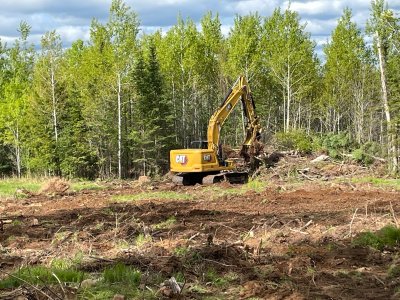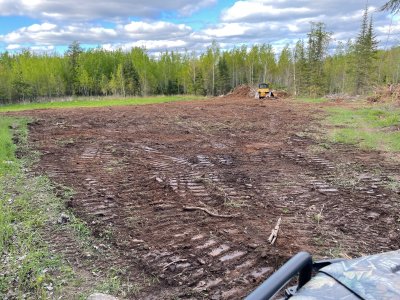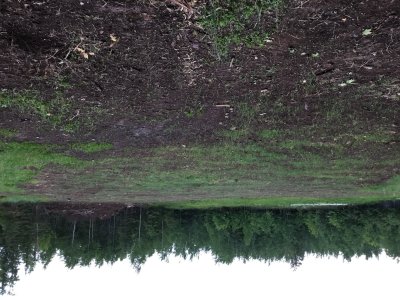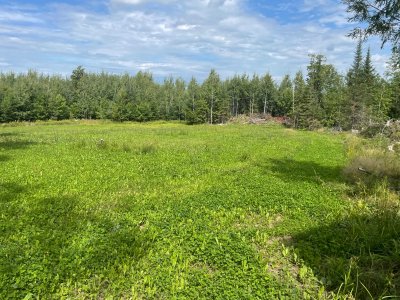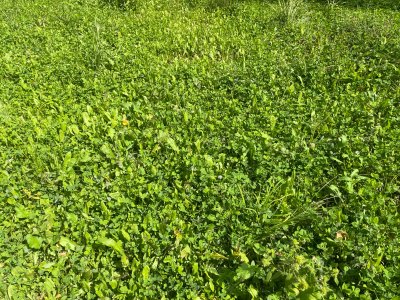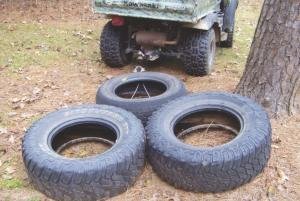I admit going in that I followed none of the rules.
But it happened that there was some big steel available on my land one day, and a new food plot was instantly born from a recently clear cut maple/basswood logging. It’s actually a 1/2+ acre addition to an old micro plot.
In 4 hours stumps were pulled, holes were filled, the biggest rocks were moved off, and a rough grade was set. It was more compacted than I would have liked, but it was done.
I knew that day I had virtually no time to work the plot this year. #reasons.
But I had to at least get something going to prep for next year. So I plucked off all the wood and rocks I had time to mess with, drug it, and threw out rye, clovers, brassicas, and chicory* with 2 50# bags of 10-10-10. And walked away.
No lime, no boron, not even a soil test!!!!


I think my before/after pics once again prove out the timeless advice……”get your seed in the ground”
YMMV
But it happened that there was some big steel available on my land one day, and a new food plot was instantly born from a recently clear cut maple/basswood logging. It’s actually a 1/2+ acre addition to an old micro plot.
In 4 hours stumps were pulled, holes were filled, the biggest rocks were moved off, and a rough grade was set. It was more compacted than I would have liked, but it was done.
I knew that day I had virtually no time to work the plot this year. #reasons.
But I had to at least get something going to prep for next year. So I plucked off all the wood and rocks I had time to mess with, drug it, and threw out rye, clovers, brassicas, and chicory* with 2 50# bags of 10-10-10. And walked away.
No lime, no boron, not even a soil test!!!!
I think my before/after pics once again prove out the timeless advice……”get your seed in the ground”
YMMV

